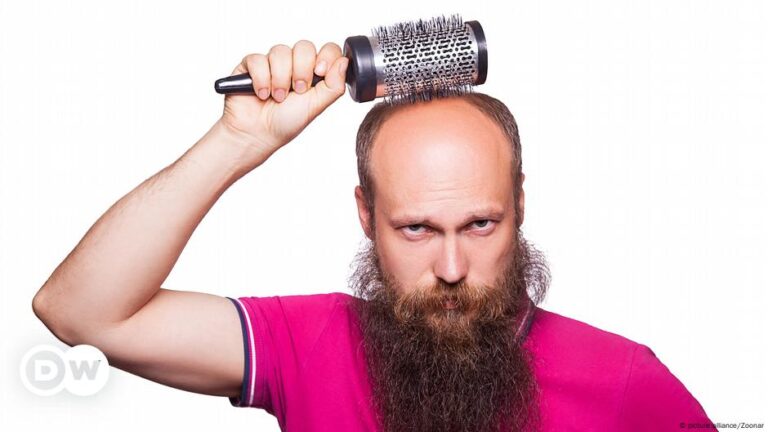Being bald has a bad reputation. When comedian Larry David won an Emmy Award for his role in the American sitcom Seinfeld in 1993, he said, “Well, it’s going very well, and it’s very nice, but I’m still bald.” Ta.
David has a great lesson for bald men looking to compensate for their hair loss rather than accept it. In 2000, David wrote an article for the New York Times Magazine titled “Kiss Me on the Head.”
“I’m a bald man out there. No wigs, no transplants, no hats, no beard… Who can respect bald men if we do such ridiculous things? That’s why men with hair… That’s why it’s so condescending towards us,” David wrote.
85% of men will experience hair loss at some point in their lives, but hair loss isn’t just for men, with 33% of women experiencing some form of hair loss or thinning.
But despite the attempts of bald advocates like David, many people are looking for ways to restore hair growth. And now there are more ways to do it than ever before.
First, let’s take a look at the causes of baldness.
Is baldness inherited from your mother?
Being bald is mainly genetically related. Estimates vary, but approximately 60-70% of hair loss risk is due to genetics.
The most common cause of hair loss is called hereditary alopecia. The technical term is androgenetic alopecia, which affects up to 50% of men and women.
There’s a popular joke that men inherit baldness from their mothers, but that’s only partially true.
Indeed, baldness is strongly linked to one gene (inherited from the mother) located on the X chromosome. This is called the AR gene.
However, baldness is polygenic, meaning that many genes are involved, by some estimates around 200 genes. Only a handful of these genes are inherited from the mother’s side, and many from the father, so it’s not entirely fair to blame the mother’s genes. Research suggests that over 80% of people experiencing hair loss have or had a bald father.
Baldness is not guaranteed
Genes do not determine the fate of the head. Even if all the men in your family sit around the dinner table like eggs in an egg crate, that doesn’t mean you’ll be bald. And there are many bald men who have families with flowing locks.
This means that environmental factors in our lives affect hair loss, but the two that have the biggest impact are stress and nutrition.
Stressful work or home life, chemotherapy, nutritional deficiencies, and even hairstyles that pull the hair too tightly (such as ponytails) can also cause temporary or permanent hair loss.
Another cause is alopecia areata caused by an autoimmune reaction.
Hormones also play a role. There is a belief that high testosterone levels cause baldness, but that is only partially true. It’s about certain hormones and their effects on hair, specifically the sex hormone dihydrotestosterone (DHT), which is derived from testosterone. Hair loss is affected by how sensitive your hair follicles are to DHT.
It’s not just men who experience hair loss due to hormones. More than 50% of women experience hair loss by the age of 80, with the most common cause being lifelong hormonal changes due to menopause, childbirth, and pregnancy.
Larry David despises bald men who wear hats. “You were trying to be seen as a hairy man. You lied, bald man,” he once wrote. Image: Al Bello/Getty Images
How to reverse hair loss
The business of hair growth products is booming. The total market size for hair loss treatment products is estimated at $3.3 billion (€3 billion) in 2020. It is expected to almost double by 2030.
As if baldness were a disease, there are several “hair restoration treatments” available for people who have lost their hair.
As an example, hair transplant surgery has become more popular in recent decades. Hair transplantation involves moving the hair follicles you already have to fill in the area of baldness. Turkey has become a popular destination for many people seeking hair transplants and other cosmetic procedures.
Then there are hair growth medications that require a prescription. One is finasteride, which acts as a DHT blocker that stops hormones that affect hair follicles. Another is minoxidil, a vasodilator, but how it promotes hair growth is not fully understood.
Rare Hair Therapy is also a regulatory approved hair growth method. Scientists aren’t entirely sure how this treatment works, but low-level laser treatments performed daily for six to 12 months can increase stem cell activity and stimulate hair follicle growth. It seems to be encouraged.
However, scientists are working hard to find more treatments for hair loss.
Sugar gel promotes hair growth
In a study in mice, researchers were testing the ability of a naturally occurring sugar in humans and animals called 2-deoxy-D-ribose (2dDR) to aid in wound healing. It has been found to promote the growth of surrounding hair.
Researchers then tested the compound for hair growth and found that a 21-day regimen of applying the sugar as a gel caused rapid growth of hair follicles.
There is one caveat. This has only been tested on mice for now, so don’t expect it to hit stores anytime soon.
In the meantime, familiarize yourself with David’s theory that bald men are better lovers. “There’s testosterone. We have tons of it. That’s why we’re bald in the first place,” he wrote years ago.
Editor: Zulfiqar Abani
Primary sources:
Stimulation of hair growth in an animal model of androgenic alopecia using 2-deoxy-D-ribose, presented by Anjum AM et al. Published in the journal “Frontiers in Pharmacology” (June 2024) https://doi.org/10.3389/fphar.2024.1370833

